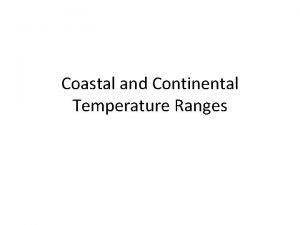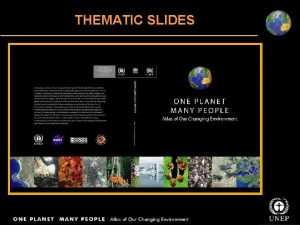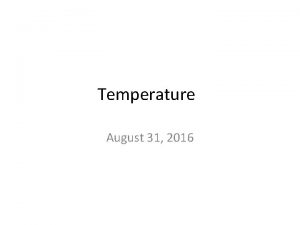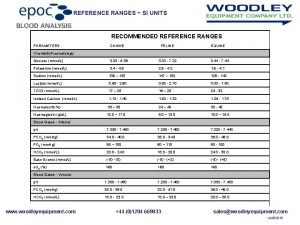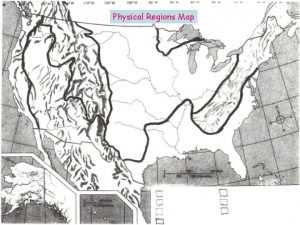Coastal and Continental Temperature Ranges Coastal Regions Areas









- Slides: 9

Coastal and Continental Temperature Ranges

Coastal Regions • Areas near a large body of water have a moderate temperature range (ie. There is a smaller difference between the winter and summer temperatures). • This is also called a marine or maritime climate

Coastal Regions • Coastal regions have a moderate climate because the nearby ocean has a high specific heat. • The ocean takes a long time to cool off after summer is over. The heat it gives off as it gets cooler keeps the adjacent land warmer. • The ocean also takes a long time to warm up in summer and the air over the shoreline is cooler

Coastal regions Therefore • Have warmer winters and cooler summers • The winters are not as cold and the summers are not as hot

Continental Regions • INLAND – away from the shore (ocean)

Continental Regions • Continental regions have a harsher climate • Continental regions have a larger range of temperatures • Summers are hotter and winters are colder

Continental regions • Land has a low specific heat • THEREFORE: • Land heats up quickly and to a higher temperature – and it cools off rapidly too • There is a bigger range of temperatures between summer and winter

• Deserts have a large range of daily temperatures • WHY ?

• 1. The sand rocks of the desert have a low specific heat and so get very hot quickly and very cold quickly • 2. DESERTS ARE DRY little or no water means no atmospheric moisture, therefore no evaporation and no clouds No clouds means that insolation is not reflected back to space – it gets hotter and hotter, etc At night there are no clouds to trap infra red ground reradiation so it gets very cold
